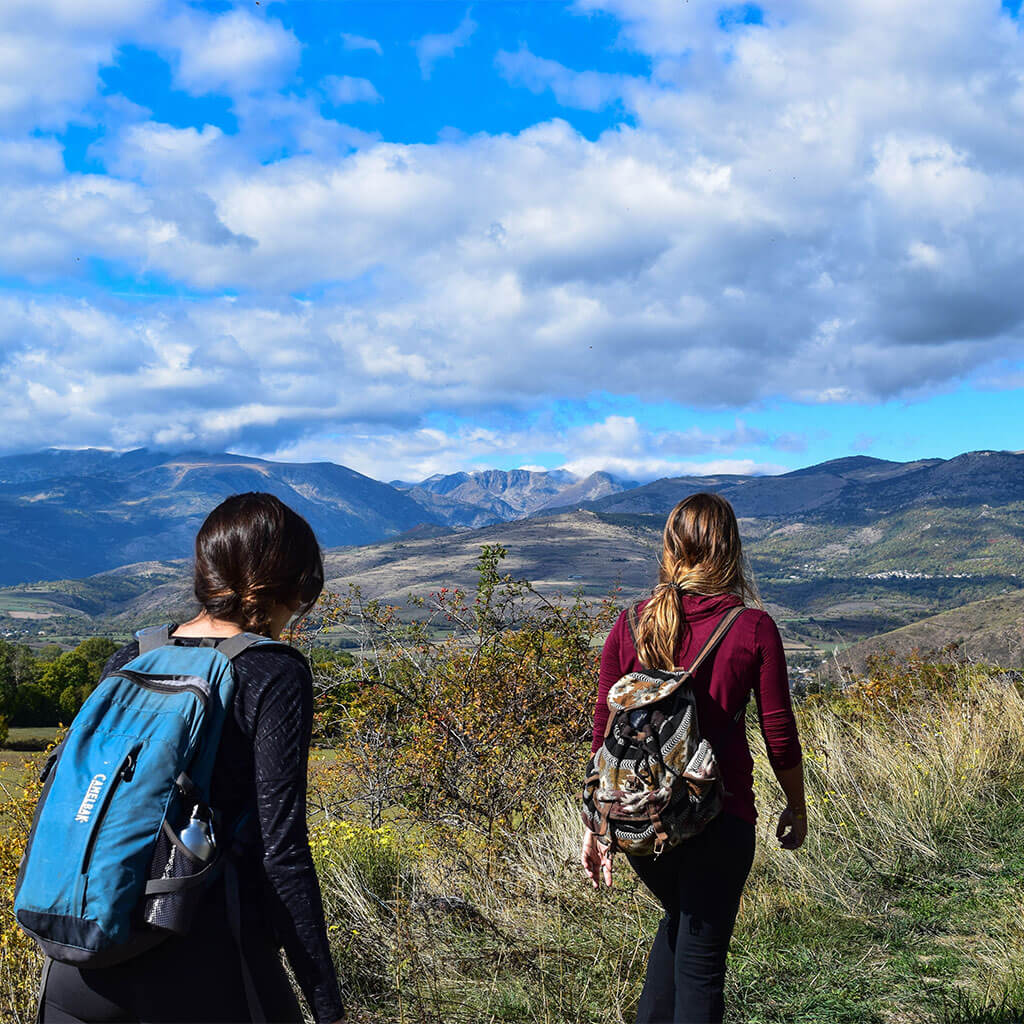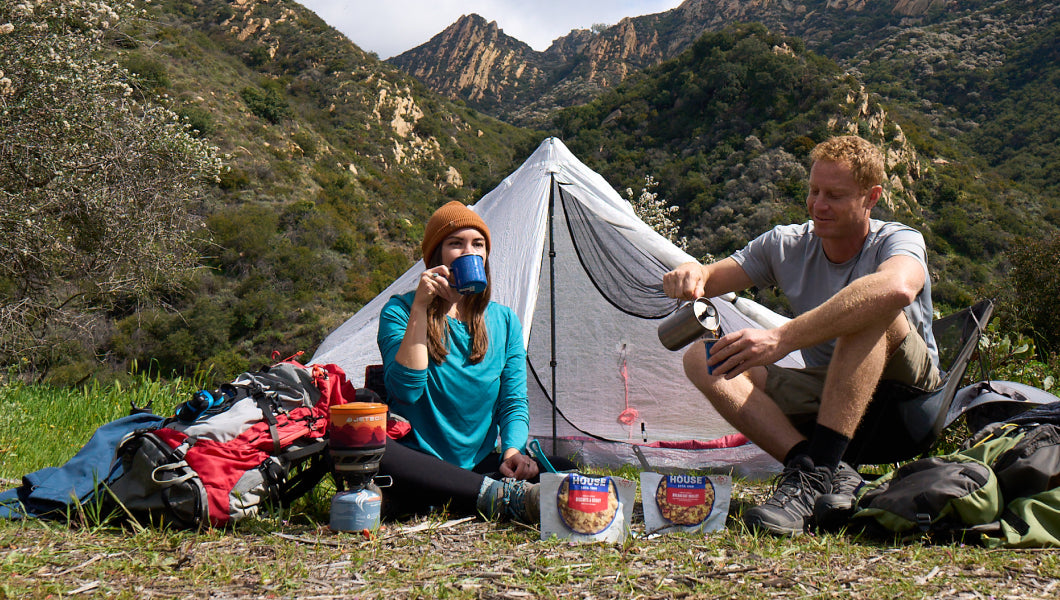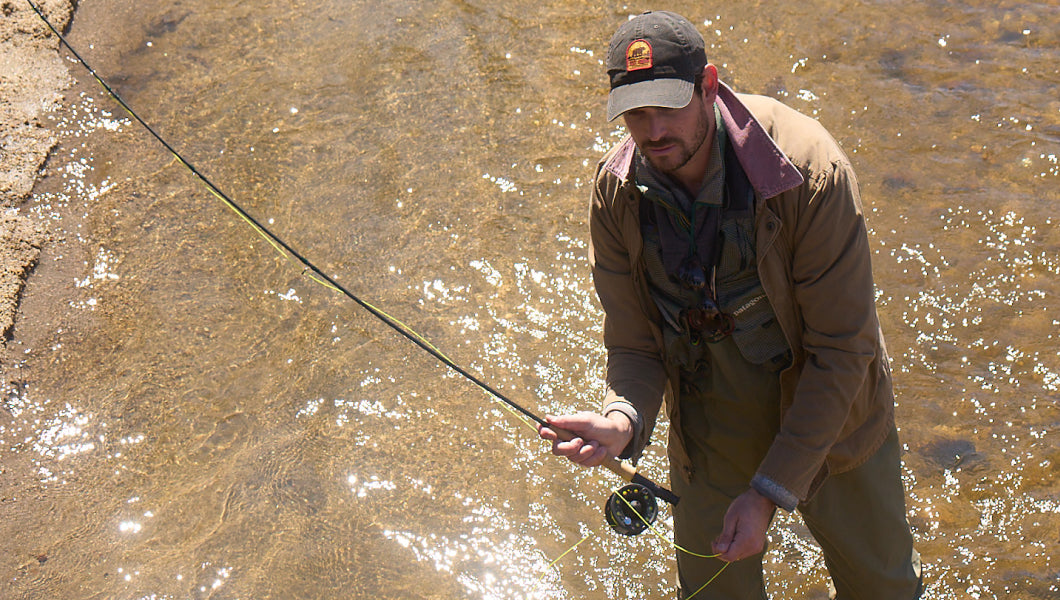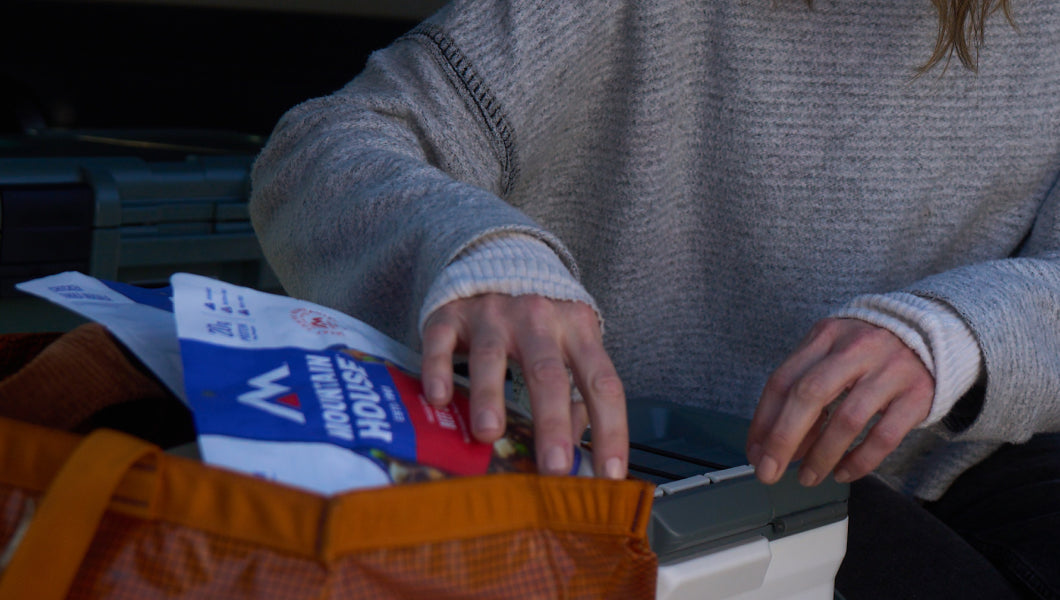Inspired for an Adventure? Check out Beef Stroganoff - Pouch and Beef Stew - Pouch
Free Ground Shipping On All Orders
Over 2,100 Reviews
Add description, images, menus and links to your mega menu
A column with no settings can be used as a spacer
Link to your collections, sales and even external links
Add up to five columns
Add description, images, menus and links to your mega menu
A column with no settings can be used as a spacer
Link to your collections, sales and even external links
Add up to five columns

Hiking for Beginners
Hiking is a pastime open to people of all walks of life: young and old, athlete-level fit and…err, not so much. Requiring no special training, skills, or fancy equipment, it's a downright democratic pursuit that serves up enjoyment, scenery, exercise, and mental stimulation all in one deeply satisfying package.
If you’re considering dipping your toes into the perambulatory waters, we say—DO IT! Hiking connects you to your primal roots and to the natural world, provides a hearty physical workout, and sharpens your senses and cognition alike. It’s also a wonderful bonding activity and social outlet among family and friends, and a way to enjoy some of the loveliest scenery you’ll ever experience firsthand—whether at the grand scale (glacier-fed lake, epic canyon) or the small (a sunny glade, say, in the middle of a county park’s woods).
Here’s a little Hiking 101 to get you going on what can be an endlessly fulfilling lifelong activity!
What to Wear Hiking
Breathable, insulating, and (mostly) fast-drying, synthetic fabrics and wool make the best all-around hiking layers. On a hot, dry summer amble, though, you may be perfectly comfortable in a cotton T-shirt.
Nothing spoils a hike like inadequate clothing in the face of an abrupt weather change. Bring an insulating layer such as a fleece vest or pullover as well as a water-resistant or waterproof shell. Protecting yourself from the sun is paramount: Apply sunblock of an adequate SPF rating and wear sunglasses and a wide-brimmed hat. A bandanna around the neck also helps.
It’s always a good idea to have a warm hat and gloves/mittens in your pack, and depending on the setting and the season you may also want to bring along rainpants and a rainhat.
Hiking Footwear
As you might imagine, footwear ranks at the top of the equipment heap for a hiker. There aren’t necessarily hard-and-fast rules here: You’ll see some unconventional kicks out there on the trail, because what ultimately matters is an individual hiker’s comfort and personal preference. Some favor low-cut trail-running or hiking shoes for their lightweight, springy feel; others gravitate toward the greater ruggedness and support offered by heavy-soled backpacking boots that extend above the ankle. Still others spend as much time as they can in their hiking sandals.
Much depends, of course, on how much and where you’ll be hiking. Many who trek up Colorado Plateau slot canyons, for example, favor tennis shoes for the task. The most robust sandals, meanwhile, won’t cut it for off-trail backpacking.
It may (and probably will) take some trial-and-error to find the hiking footwear that best suits you and the sort of hiking you’re pursuing. Remember to break in any boots or shoes before a long dayhike or backpacking trip: Wear them around the house and around town, then give them a spin out on the trail.
What to Bring on a Hike: The Ten Essentials
We’ve written here at the Mountain House blog before about the Ten Essentials, the Mountaineers’ classic list of fundamentals that every traveler in the backcountry should have on hand. This includes not just backpackers and alpinists but also dayhikers, who never know when a wrong turn, sudden storm, or serious injury might leave them stuck in the wilds longer than they intended. Being prepared for such situations can make a critical difference.
So get in the habit of double-checking for these items before you hit the trail, whether it’s particularly remote or not.
- Navigation (map, compass, GPS, etc.)
- Sun Protection (sunscreen, sunglasses, sun hat, bandanna, etc.)
- Insulation (outerwear, extra layers)
- Illumination (headlamp, flashlight, collapsible lantern, extra batteries)
- First-aid kit
- Fire-making Supplies (matches/lighter/firestarter, emergency tinder, waterproof container)
- Repair (knife, fixit kits for gear, duct tape)
- Nutrition (at least one day’s worth of extra food)
- Hydration (water treatment system, extra water)
- Emergency Shelter (tarp, bivy, emergency blanket, poncho, etc.)
Trekking Poles
You can significantly reduce knee strain on a hike by using trekking poles on the trail. Besides generally distributing and diminishing your body’s exertion, these collapsible poles also boost your surefootedness over challenging terrain (talus, steep slopes, riverbeds, etc.) and serve plenty of secondary functions—including anchoring an emergency shelter.
Where to Hike
Hiking tends to be defined as an activity in a “natural” or relatively undeveloped setting, but that doesn’t mean you can’t ease into the activity via urban walkabouts. Strap on a daypack and put it through some mileage on city sidewalks: It’s great approach for transitioning into wilder rambles and a means of staying conditioned when weather, work schedules, or other factors keep you from escaping to the nearest park or forest.
If you’re never really hiked before, it makes sense to pursue your first hiking trips on short, well-signed, well-graded front-country paths. That might be the trail network in a large urban greenspace, a campground path in a state forest, or an interpretive trail in a national park. An organized hike by a ranger, naturalist, or some other guide is an excellent way to get comfortable with the routine of hiking. These are often advertised by local public parks and forests, outdoor stores and schools, land trusts and conservation groups, and the like.
The Next Frontier: Backpacking?
Some people are content to stick to dayhiking exclusively, and that’s perfectly fine. But if you’re lamenting the fact you need to get back to the trailhead before dark when you feel you’re accessing increasingly tantalizing countryside and really getting into an on-trail groove, perhaps backpacking—which, of course, is simply hiking spread out across multiple days—is something to investigate.
If you want to sample a bit of the rhythm of backpacking without actual doing your first overnighter quite yet, consider packing a backcountry stove in your pack alongside a tasty Mountain House meal, and turn lunch into a trailside cookout. Then take a stab at a night out in the woods, selecting a close-to-home area and a low-mileage hike in for the inaugural event.
You’ll find plenty more hiking and backpacking tips here in the archives of the Mountain House blog. We hope you do give hiking a try: We have a strong suspicion it’ll become an intrinsic part of your lifestyle before you know it!

Best Places to Go Winter Wildlife Watching in North America

Exploring the Best Winter Desert Hiking in the Southwest United States


Stay Hungry for Adventure
Sign Up for Delicious Outdoor Meals & Exclusive Offers!


Join the adventure
©2024 Mountain House — All Rights Reserved.
Your Cart is Empty
Continue ShoppingYour Cart
Subtotal
$0.00
EXPRESS PAYMENT METHODS AVAILABLE IN CHECKOUT
Taxes and Shipping Calculated at Checkout














